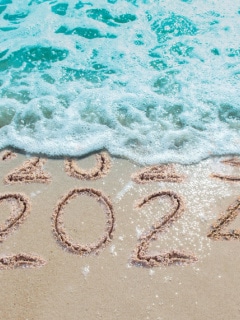CKYC Registry
-
Customer Service Contact us Service request Locate a branch
Find all the help you need
Scan the QR, get our app, and find help on your fingertips

Help CenterSupport topics, Contact us, FAQs and more
-
Login
Are you ready for an upgrade?
Login to the new experience with best features and services
-
Login
Are you ready for an upgrade?
Login to the new experience with best features and services
- Accounts
-
Deposits
IDFC FIRST Bank Deposits
View all Deposits -
Loans
IDFC FIRST Bank Loans
View all Loans - Wealth & Insure
-
Payments
IDFC FIRST Bank Payments
View all Payments -
Cards
IDFC FIRST Bank Cards
View all Cards - Blogs
- Corporate Account
-
Cash Management Services
IDFC FIRST Bank Cash Management Services
View all Cash Management Services - Supply Chain Finance
-
Corporate Lending
IDFC FIRST Bank Lending
View all -
Treasury
IDFC FIRST Bank Treasury
See more details - NBFC Financing
Support topics, Contact us, FAQs and more
- IDFC FIRST Bank Accounts
-
Savings Account
-
Corporate Salary
Account -
Senior Citizens
Savings Account -
First Power
Account -
Current Account
-
NRI Savings
Account -
TASC Institutional
Account -
Savings Account
Interest Calculator
- IDFC FIRST Bank Deposits
-
Fixed Deposit
-
Recurring Deposit
-
NRI Fixed Deposit
-
Safe Deposit Locker
-
FD Calculator
-
RD Calculator
- IDFC FIRST Bank Loans
-
Personal Loan
-
Consumer Durable
Loan -
Home Loan
-
Business Loan
-
Professional Loan
-
Education Loan
-
New Car Loan
-
Pre-owned Car Loan
-
Two Wheeler Loan
-
Pre-owned Two
Wheeler Loan -
Commercial Vehicle
Loan -
Gold Loan
-
Loan Against Property
-
Loan Against Securities
-
Easy Buy EMI card
-
Personal Loan
EMI Calculator -
Education Loan
EMI Calculator -
Home Loan
EMI Calculator -
EMI Calculator
-
Personal Loan Eligibility Calculator
- IDFC FIRST Bank Wealth & Insure
-
FIRST Select
-
FIRST Wealth
-
FIRST Private
-
Mutual Funds
-
Sovereign Gold Bond
-
Demat Account
-
Term Insurance
-
Life Insurance
-
Health Insurance
-
General Insurance
-
Bonds
-
Loan Against
Securities -
Portfolio Management
Service
- IDFC FIRST Bank Payments
-
FASTag
-
Credit Card
Bill Payments -
UPI
-
Funds Transfer
-
Forex Services
-
Pay Loan EMI
- IDFC FIRST Bank Cards
-
Ashva :
Metal Credit Card -
Mayura :
Metal Credit Card -
FIRST Millennia
Credit Card -
FIRST Classic
Credit Card -
FIRST Select
Credit Card -
FIRST Wealth
Credit Card -
FIRST WOW!
Credit Card -
Deals
-
Debit Cards
-
Co-branded Cards
-
Credit Card
EMI Calculator -
FIRST Corporate
Credit Card -
FIRST Purchase
Credit Card -
FIRST Business
Credit Card
- Premium Metal Credit Cards
-
AshvaLifestyle1% Forex₹2,999
-
MayuraLifestyleZero Forex₹5,999
-
FIRST PrivateInvite Only
- Best for travellers
-
MayuraZero ForexMetal₹5,999
-
Ashva1% ForexMetal₹2,999
-
FIRST WOW!Zero ForexTravelLifetime Free
-
FIRST SWYPTravel OffersEMI₹499
-
FIRST Select1.99% ForexLifestyleLifetime Free
-
FIRST Wealth1.5% ForexLifestyleLifetime Free
-
Club VistaraTravelLifestyle₹4,999
-
IndiGo IDFC FIRST Dual Credit CardTravelLifestyle₹4,999
- Max benefits, Free for life
-
FIRST Classic10X RewardsShoppingNever Expiring Rewards
-
FIRST Millennia10X RewardsShoppingNever Expiring Rewards
-
FIRST Select10X RewardsLifestyle1.99% Forex
-
FIRST Wealth10X RewardsLifestyle1.5% Forex
-
FIRST WOW!RewardsTravelZero Forex
-
LIC ClassicRewardsInsuranceShopping
-
LIC SelectRewardsInsuranceShopping
- Reward Multipliers
-
AshvaLifestyleMetal₹2,999
-
MayuraLifestyleZero Forex₹5,999
-
FIRST ClassicNever Expiring RewardsShoppingLifetime Free
-
FIRST MillenniaNever Expiring RewardsShoppingLifetime Free
-
FIRST SelectNever Expiring RewardsLifestyleLifetime Free
-
FIRST WealthNever Expiring RewardsLifestyleLifetime Free
- Rewards & Credit on UPI
-
FIRST Power+FuelUPI₹499
-
FIRST PowerFuelUPI₹199
-
FIRST EA₹NVirtual1% Cashback₹499
-
FIRST DigitalVirtualUPI₹199
-
IndiGo IDFC FIRST Dual Credit CardUPITravelDual cards
- Fuel and Savings
-
FIRST PowerRewardsUPI₹199
-
FIRST Power+RewardsUPI₹499
-
LIC ClassicRewardsInsuranceShopping
-
LIC SelectRewardsInsuranceShopping
- Express and Flaunt
-
AshvaMetal1% Forex₹2,999
-
MayuraMetalZero Forex₹5,999
-
FIRST SWYPEMIOfferMAX₹499
-
FIRST MillenniaRewardsShoppingLifetime Free
- FD Backed rewarding Credit Cards for all
-
FIRST EA₹NVirtualCashback₹499
-
FIRST WOW!Zero ForexTravelLifetime Free
-
CreditPro Balance TransferTransfer & SaveReduce InterestPay Smartly
- IDFC FIRST Bank NRI Forex Solutions
-
Send money to India-Wire transfer
-
Send money to India-Digitally
-
Send money abroad
-
Max Returns FD (INR)
- IDFC FIRST Bank MSME Accounts
-
Platinum Current
Account -
Gold
Current Account -
Silver Plus
Current Account -
Merchant Multiplier
Account -
Agri Multiplier
Account -
TASC Institutional
Account -
Dynamic Current
Account -
World business
Account -
First Startup
Current Account
- IDFC FIRST Bank Business Loans
-
Business Loan
-
Professional Loan
-
Loan Against Property
-
Business Loan for Women
-
Working Capital Loan
-
Construction Equipment Loan
-
Machinery Loan
-
Healthcare Equipment Loan
- IDFC FIRST Bank Business Solutions
-
Payment Solutions
-
Tax Payments
-
Doorstep Banking
-
Point of Sale (POS)
-
Escrow Accounts
-
NACH
-
Payment Gateway
-
UPI
-
Virtual Accounts
-
As per amendment in the Income Tax Rules, PAN or Aadhaar are to be mandatorily quoted for cash deposit or withdrawal aggregating to Rupees twenty lakhs or more in a FY. Please update your PAN or Aadhaar. Kindly reach out to the Bank’s contact center on 1800 10 888 or visit the nearest IDFC FIRST Bank branch for further queries.
-
-
Most Searched
Sorry!
We couldn’t find ‘’ in our website
Here is what you can do :
- Try checking the spelling and search
- Search from below suggestions instead
- Widen your search & try a more generic keyword
Suggested
Get a Credit Card
Enjoy Zero Charges on All Commonly Used Savings Account Services
Open Account Now
Savings Account
What is Marginal Utility?
Summary: In economics, the concept of marginal utility refers to the satisfaction that a consumer derives, upon consuming additional units of a product or a service. But what does it have to do with one’s savings? Learn how marginal utility and savings are intertwined.
The concept of marginal utility is key to understanding consumer behaviour. Marginal utility generally declines with higher consumption. Savings play an important role in maintaining a stable marginal utility of money over time. Understanding marginal utility and how savings enhance it can provide useful insights on optimizing economic utility and satisfaction. This article explores the marginal utility meaning, factors affecting it, and how savings can increase the marginal utility derived from money.
READ MORE
What is marginal utility?
Marginal utility refers to the additional satisfaction or benefit a consumer gains from having additional units of a product or service. It describes how much extra utility is provided by an increase in consumption. For example, the marginal utility of the fourth apple eaten is lower than that of the 1st apple.
Initially, as you start saving, the marginal utility is typically high because each additional unit of savings contributes significantly towards achieving your financial goals or securing your future. For instance, the first few thousand rupees saved might go towards building an emergency fund or paying off debts, providing a sense of security and relief.
However, as your savings increase, marginal utility tends to decrease. This is because the additional units saved might not have as significant an impact on your financial situation as compared to earlier savings. At this stage, marginal utility might diminish to the point where the satisfaction gained from saving more becomes minimal.
The concept of marginal utility of money is attributed to the 19th century economist Alfred Marshall. It plays a key role in explaining consumer behaviour and the value placed on different units of a commodity.
Types of marginal utility
- Positive marginal utility: Positive marginal utility occurs when saving an additional unit of money increases overall satisfaction or financial well-being. For example, saving money for a specific goal like a vacation or retirement can bring a sense of accomplishment and security, thus providing positive marginal utility.
- Neutral marginal utility: Neutral marginal utility in savings happens when saving an additional unit of money neither significantly increases nor decreases overall satisfaction. This might occur when saving for routine expenses or when adding to an emergency fund that already provides a sense of financial stability.
- Negative marginal utility: Negative marginal utility arises when saving an additional unit of money decreases overall satisfaction or financial well-being. This could occur if excessively tight budgeting leads to sacrificing essential needs or experiences, thereby reducing overall happiness despite having more savings.
Examples of marginal utility
Imagine you are saving for a vacation. Initially, each rupee saved adds significant excitement and anticipation, enhancing your overall satisfaction—a clear example of positive marginal utility. However, as your savings grow, the incremental joy from each additional rupee saved diminishes, reflecting diminishing marginal utility. Eventually, if you save excessively beyond your needs, sacrificing present enjoyment or necessities, it could lead to negative marginal utility, reducing overall happiness despite having more savings.
Characteristics of marginal utility
Marginal utility declines as more units are consumed. This is called the law of diminishing marginal utility. Marginal utility of money represents the utility gained from the last or marginal unit consumed rather than the total utility. It highlights the satisfaction from an additional unit, not the overall utility. Marginal utility helps explain consumer preference for variety rather than more of the same item due to declining marginal utility. It guides consumer spending decisions within a limited budget by comparing marginal utilities.
Marginal utility also influences the demand curve and price determination of a commodity.
Factors affecting marginal utility
- The rate of consumption - Consuming units of a product faster leads to declining marginal utility.
- Time - The marginal utility for a commodity may increase after some time gap following an initial period of high consumption.
- ndividual preferences - The utility gained varies across individuals based on their personal tastes and preferences.
- Availability of substitutes - The presence of close substitutes for a product lowers its marginal utility for consumers.
- Budget - Higher purchasing power and disposable income increases the marginal utility derived.
Marginal utility of money
Money has high marginal utility for low-income groups. Additional income makes a big positive difference to their lifestyle. For high-income groups, extra money adds relatively less utility at the margin due to diminishing returns. During financial hardship or emergency situations, the marginal utility of money rises sharply for individuals. Windfall gains like lottery winnings have lower marginal utility compared to money earned through one's efforts.
Savings increase marginal utility of money
Savings create a larger disposable income pool. Higher availability of money increases its marginal utility. Savings can absorb income shocks during adversities, preventing sharp falls in disposable income. This stabilizes the marginal utility of money. They enable meeting big ticket expenses like children’s education fees through lump sum payments, which have higher utility. When income falls suddenly, like job loss, savings help maintain consumption providing utility. Overall, savings make the marginal utility curve flatter and more stable over time.
How to raise marginal utility of savings?
- Building an emergency corpus to handle contingencies without income drops to maintain utility.
- Maintain health insurance to prevent medical spends from eroding savings.
- Invest savings to earn inflation-beating returns rather than leaving the money idle.
- Avoid temptation-spending from savings for short-term happiness spikes that reduce utility.
- Periodically review savings and financial goals to identify any shortfall, requiring course correction.
- Open a savings account that offers high interest rates and charges minimal fees to help grow your savings quickly.
Disclaimer
The contents of this article/infographic/picture/video are meant solely for information purposes. The contents are generic in nature and for informational purposes only. It is not a substitute for specific advice in your own circumstances. The information is subject to updation, completion, revision, verification and amendment and the same may change materially. The information is not intended for distribution or use by any person in any jurisdiction where such distribution or use would be contrary to law or regulation or would subject IDFC FIRST Bank or its affiliates to any licensing or registration requirements. IDFC FIRST Bank shall not be responsible for any direct/indirect loss or liability incurred by the reader for taking any financial decisions based on the contents and information mentioned. Please consult your financial advisor before making any financial decision.
The features, benefits and offers mentioned in the article are applicable as on the day of publication of this blog and is subject to change without notice. The contents herein are also subject to other product specific terms and conditions and any third party terms and conditions, as applicable. Please refer our website www.idfcfirst.bank.in for latest updates.

























